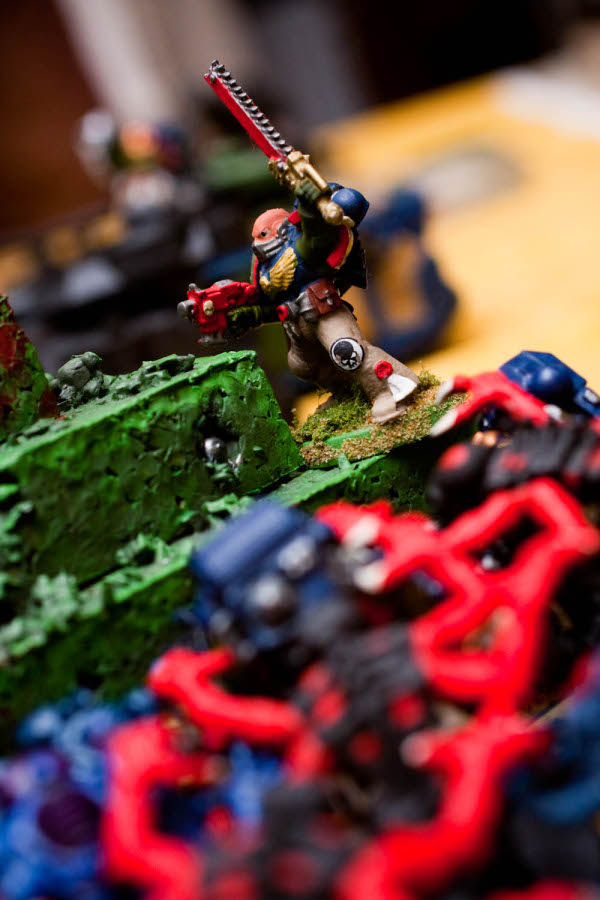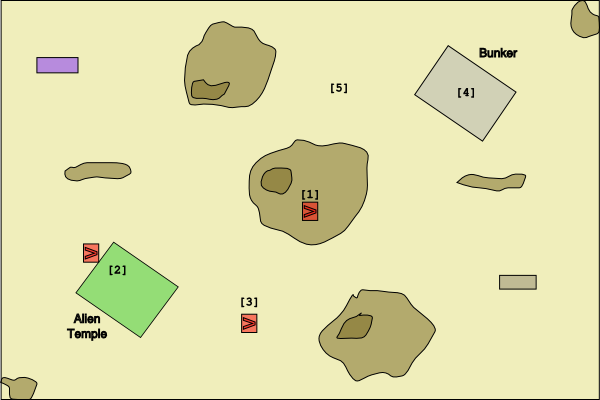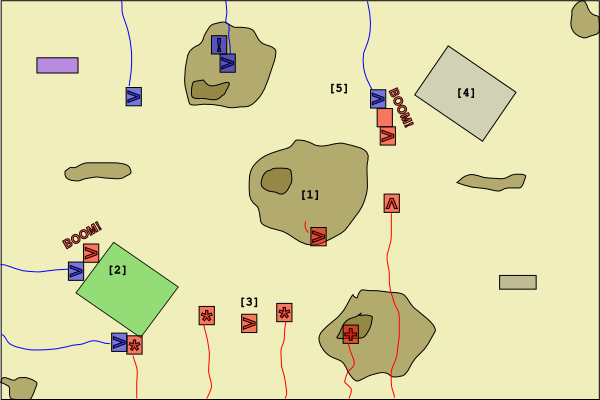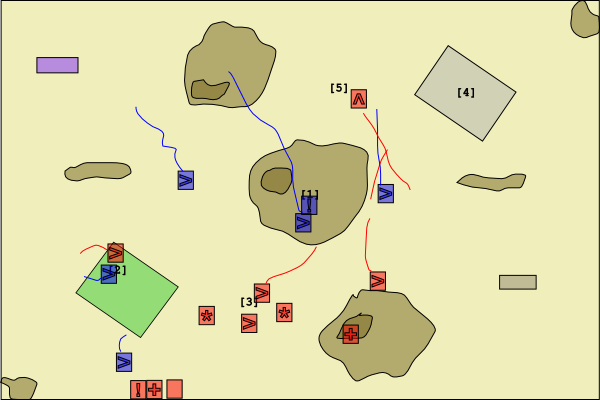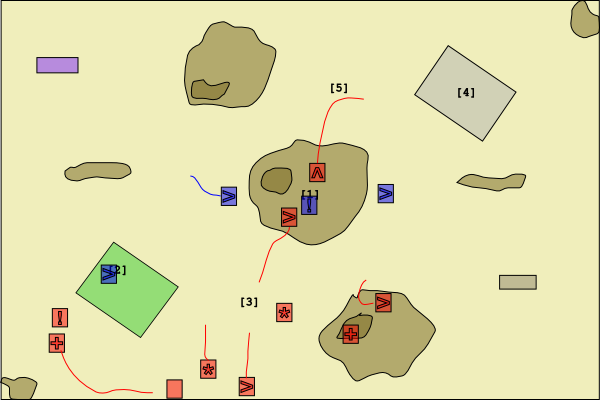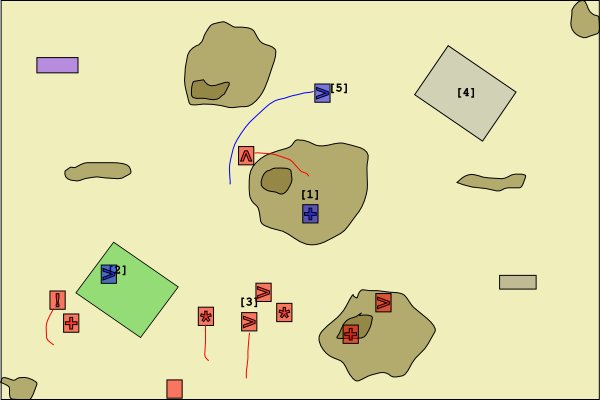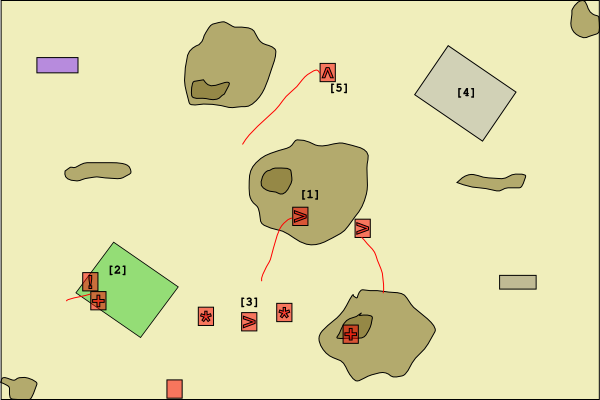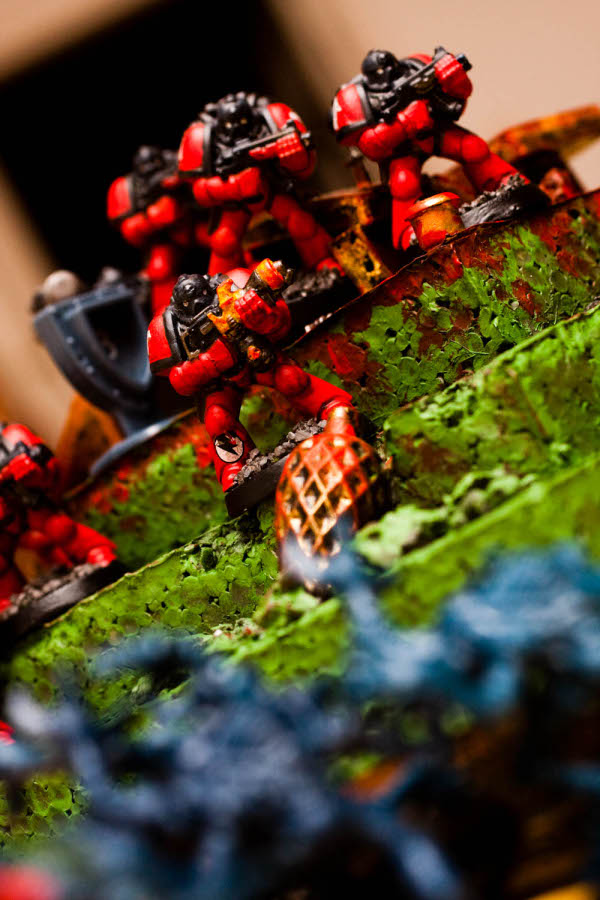Most of the original core of my first, current 40k army was started with models given or lent to me by my friends Matt, Lovell, and Daryl. When I started expanding that list, Devastators were the first models I bought. I chose them for two simple reasons: They looked cool, and I figured I could use some heavy weapons. Emphasis was on the former. In their first couple games, plasma cannoneer Jericho and his squad picked up some splashy kills and were fast tracked onto my painting schedule. They came out pretty well, cementing their position in my roster.
 Like several of my units, such as my Captain Angholan, I continue to play my Devastators in every normal sized game simply because they look awesome and have built up a great narrative across my games, factors that overwhelm some possible tactical shortcomings. I always roll my Devastators as two Plasma Cannons and two Heavy Bolters, with at least two or three additional marines as ablative wounds. That’s an expensive setup at some 218+ points, and unpopular in Internet theory hammer, but fortunately I generally find my Devastators to be an effective unit. The following are some thoughts on them.
Like several of my units, such as my Captain Angholan, I continue to play my Devastators in every normal sized game simply because they look awesome and have built up a great narrative across my games, factors that overwhelm some possible tactical shortcomings. I always roll my Devastators as two Plasma Cannons and two Heavy Bolters, with at least two or three additional marines as ablative wounds. That’s an expensive setup at some 218+ points, and unpopular in Internet theory hammer, but fortunately I generally find my Devastators to be an effective unit. The following are some thoughts on them.
Size. Ablative wounds are critical. A basic five man squad is marginally cheaper, but starts losing significant functionality with just one wound. Even losing the Sergeant and his BS 5 targeting ability is a notable loss. With seven men in the squad and parked in cover, it will take a lot of sustained fire to severely cripple the unit, the Plasma Cannons usually making it to the endgame. Large portions of an eight man group safely tucked into cover will usually make it through an entire game. Two or three Tactical Marines to provide a wound buffer for the Devastators are well worth the cost to protect the initial outlay on the unit and their weapons.
Weapons. Two Plasma Cannons are the core of my unit in part because they look cool, and because I face a lot of power armor in my local gaming circle, particularly pesky Chaos Marines and Necrons. Heavy Bolters provide a somewhat more reliable source of hits and strike a reasonable balance between number of shots, reliability, effectiveness, and cost.
I feel Multi-Meltas have too limited range to be really useful in the backfield deployment zones my Devastators usually inhabit. This is even more true for Heavy Flamers.
Lascannons would be more useful against mechanized armies, but I felt they didn’t put out enough wounds for the horde armies that are also common in my group. I’m also not super compelled by the look of the Lascannons, but that’s just me.
Missile Launchers are very tempting, and strike a great balance between fighting mechanized, power armor, and horde armies. The longer range on the Launchers would also be useful. One downside is that they’re less psychologically effective against power armor. People fear plasma, and fear is always a useful thing. There are also enough Missile Launchers floating around in my Tac Squads that I feel there are enough of them floating around in my army. That said, a group of Missile Launchers would be a cheaper and probably nearly as effective stand-in for the Plasma Cannons. One note on that is that against anything but very light troops, they should probably stick to Krak Missiles. Granted they’ll put out fewer hits, but they’re more likely to wound against power armor, and most such units aren’t large enough to ignore a kill or two here or there.
Deployment. My Devastators always deploy in cover when they can, and move as little as possible. Hidden in good 3+ ruins, or even just nominal 4+ cover, they will be fairly difficult to unlodge through shooting. If there is a Techmarine in the army—I sometimes include a Thunderfire Cannon—and the Devastators can be placed in ruins, then they’re a great candidate to have their cover Bolstered by the Techmarine.
Giving the Devastators good sightlines from the start and moving them as little as possible is important. Given the number of points spent on the unit, they should ideally be shooting on every possible turn, requiring that they be stationary. One difficulty with this is Dawn of War deployment, in which the Devastators must run or drive onto the board, losing at least one turn of shooting. Notably, many tournaments cycle rounds through each deployment type, guaranteeing that this must be considered in employing Devastators.
For this reason it could be worth giving the Devastators a transport, but I don’t generally do this. With a few ablative wounds, the unit would require a Rhino, which would largely go unused the remainder of the game in my army except as movable terrain. A Razorback and its Twin-Linked Heavy Bolter would be a good support for the unit, but just can’t fit it. Given that the Devastators can move and then run nearly as far as a transport could get them in one turn, and almost certainly as far onto the board as I would want them to go, I usually don’t bother with a transport.
What I do find to be important, however, is to have them move and run onto the board in such a position that they can shoot in the consequent turn. Many times in Dawn of War games I have run my Devastators into similar covering terrain as I would normally opt to deploy them in. If they can move and then run through the terrain into a position in which they can shoot well, then this works out well. If they come up low in Difficult Terrain or Run rolls, however, they can get stranded and require a second turn of movement to get into place. Many terrain pieces are simply too large or too obstructed for the Devastators to get into position quickly enough to be effective for the remainder of the game.
Losing two turns of shooting is a significant hit on the efficiency and effectiveness of the expensive Devastators unit, and needs to be avoided, even at cost. Although the unit may take significantly more wounds, in this deployment setup, it may be worthwhile to deploy the Devastators into a relatively exposed open area such that they may get into place and begin shooting the next turn, rather than risk two turns of movement.
Close Combat. Always deployed as part of my rear Heavy Support and Defensive block, it is not uncommon for my Devastators to become entangled in close combat when outflanking or deep striking units breach the line. This is unfortunate as it wastes the shooting capabilities of the unit for which so many points were spent. The good news, however, is that the Devastators, like all Marines, can hold their own against many such units, even somewhat strong close combat specialists. They will die, but they’ll last several turns and take a number of the enemy with them. Although very costly when it happens, I have come to rely on my Devastators to be a last stop bulwark against total infiltration of my rear area.
 Conclusions. I admit freely that any questions of the Devastators’ efficiency as a unit is surmounted for me by the aesthetic and narrative appeal of the models and squad. However, I don’t think they’re as sub-optimal as Internet wisdom holds. It is true that a pair of (Dakka) Predators is significantly cheaper, more mobile, and has as much firepower as a group of Devastators. For that reason, my core Heavy Support block for mid to large sized game is comprised of two Dakka Predators (Autocannon, Heavy Bolters) and a squad of Devastators.
Conclusions. I admit freely that any questions of the Devastators’ efficiency as a unit is surmounted for me by the aesthetic and narrative appeal of the models and squad. However, I don’t think they’re as sub-optimal as Internet wisdom holds. It is true that a pair of (Dakka) Predators is significantly cheaper, more mobile, and has as much firepower as a group of Devastators. For that reason, my core Heavy Support block for mid to large sized game is comprised of two Dakka Predators (Autocannon, Heavy Bolters) and a squad of Devastators.
However, I think the Devastators have several features that make them a worthwhile unit in their own right:
- The Sergeant’s BS 5 targeting ability is very useful.
- Plasma Cannons are useful against a number of armies, including Chaos Marines and other power armored or equivalent opponents. Devastators are the Marines’ only option to get plasma out on the table.
- Missile Launcher, Heavy Bolter, Lascannon, and Plasma Cannon ranges are all high enough to cover significant portions of the board. This provides for flexibility, area control, and getting multiple shots off on advancing enemies before the squad is swept up in close combat.
- Devastator squads are fairly survivable, and degrade nicely. While tough, vehicles are susceptible to lucky shots and unfortunately placed enemy Melta weapons, Lascannons, or similar. Especially with many armies well equipped to hunt vehicles, they’re prone to being scragged in one stroke of bad luck. Devastators, especially if some distance to the enemy can be maintained, will only slowly lose models as the unit takes hits. Meanwhile, the core can keep shooting, firepower slowly degrading as the squad racks up casualties.
- Unlike vehicles, Devastators can tie up a unit in close combat. This is a waste of their prime abilities, but is useful as a last ditch defensive measure. Even against reasonably strong close combat units such as Genestealers, the basic Marine statline enables the Devastators to survive for a few rounds of combat. This can provide just enough time for reinforcements to arrive and swing the combat, or simply for the clock to run out and the game to end. Vehicles, in contrast, can simply be run around or easily dispatched and aren’t as able to impede an enemy rush on a home objective.
In addition to the general preceding notes on Devastators’ advantages versus vehicles, some quick thoughts on alternatives in the standard Space Marine lists include:
- Vindicators have great firepower but limited range, and are difficult to keep ahead of an assault and quick to be destroyed once stuck in.
- Thunderfire Cannons can put out a lot of hits but are fairly brittle, and have limited effectiveness against power armor. Its munitions simply don’t have low enough AP to fight marine equivalents.
- It’s tempting and useful to use Tactical Combat Squads with Heavy Weapons instead of a dedicated Devastator squad. All of the weapons are significantly cheaper this way. Downsides include the fact that a full Tactical Squad generally moves too much to warrant paying for a Heavy Weapon, five man Combat Squads are easy to wipe out or break, and there’s just something to be said for a fistful of Heavy Weapons firing all at once, one at BS 5. That said, putting a Combat Squad with a Heavy Weapon into deep cover or a Razorback and camping out is a great way to hold a home objective and complement a defensive Heavy Support block at the same time.
All told, I think Devastators are a solid list selection. They’re an expensive unit, but in my playing consistently bring home their cost in enemy points and serve an important role in my defensive block.
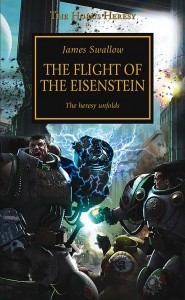 Flight of the Eisenstein by Swallow is the fourth book in the Horus Heresy series. It focuses on Captain Nathaniel Garro of the Death Guard at the moment the Heresy begins in earnest.
Flight of the Eisenstein by Swallow is the fourth book in the Horus Heresy series. It focuses on Captain Nathaniel Garro of the Death Guard at the moment the Heresy begins in earnest.

